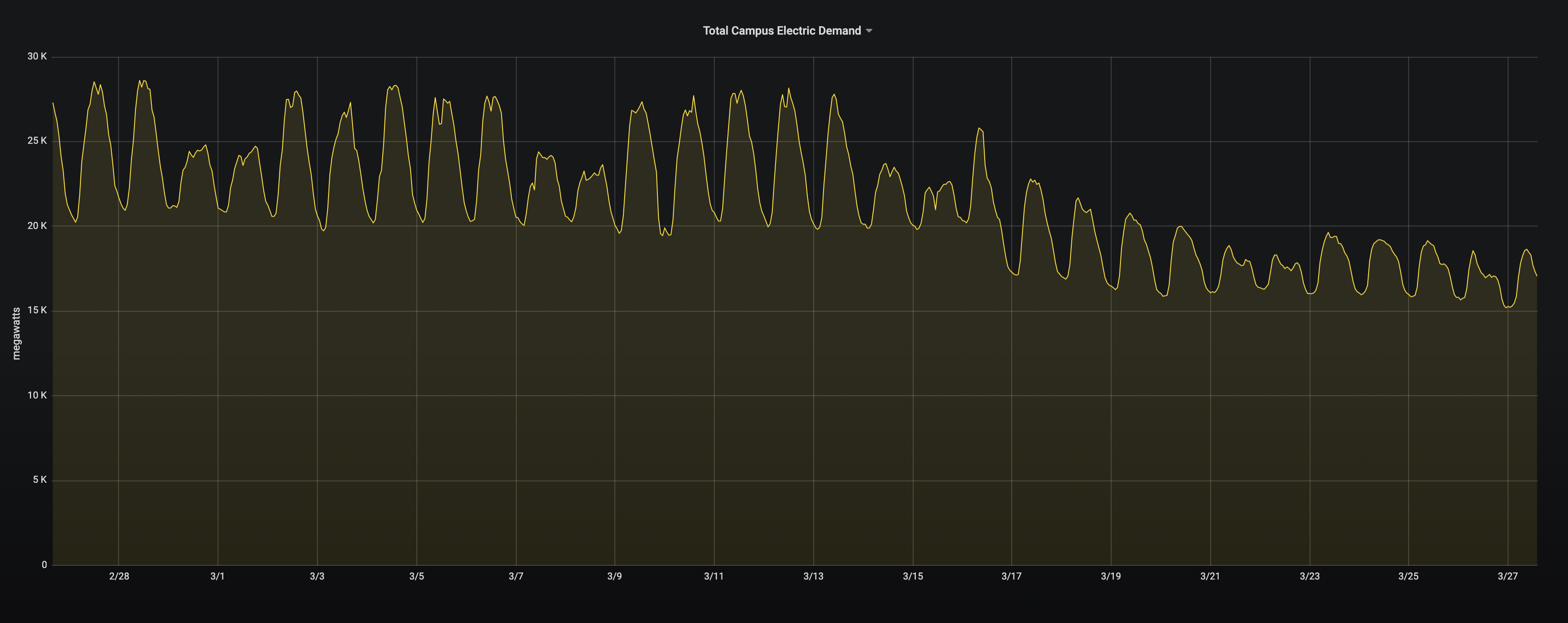
As of March 26th, 2020, Cornell began centralized cutbacks in heating and energy use in buildings across campus. Due to greatly reduced occupancy in student residences, administrative offices, and lab spaces due to policies implemented by Cornell leadership and New York State Governor Andrew Cuomo through mid-March, many buildings have reduced or zero occupancy.
Mark Howe, Director Utilities Distribution and Energy Management, saw this as an opportunity for critical savings, noting that, “In light of the reduced campus occupancy we have an opportunity to save energy while maintaining a safe and healthy indoor environment.”
The Energy Management Team is identifying a weekly schedule of buildings that have reduced occupancy and can, therefore, reduce heating (or cooling). This process is called “load shedding,” or reducing the demand for energy production.
Buildings with ongoing significant occupation and use will be excluded.
The team will monitor building performance and weekly weather and make decisions about how to reduce energy use for heating (or cooling) in buildings based on the predicted outdoor temperatures for that week. Facilities Coordinators will receive an email at the beginning of each week with a list of buildings targeted.
Cornell provides heat & power to most campus buildings through its own Combined Heat & Power plant. Reducing building demand will reduce production demands on the plant, “right-sizing” our energy production to save energy and reduce the campus carbon footprint. Load shedding is routinely practiced and planned for, even under normal operating conditions. It is typically employed during times of unusual energy demand. Cornell has implemented load shedding in the past and has standard operating procedures to draw on during this time.Campus electrical use has already declined by 1/3 since student move-out and remote work phase-in began several weeks ago.
The load shedding implemented by Energy Management is anticipated to reduce the energy used to heat and cool buildings by another 1/3 in unoccupied spaces.
Update, April 2nd 2020: After initiating load shed, campus electric demand dropped by 1.5 MW - the lowest value in the past 5 years of recorded data. This is equivalent to the energy use of 1,500 average American homes.
Cornell's Real Time Building Utility Use Dashboard can be used to explore data and graphs of Cornell's energy demand, production, and renewable energy output.
